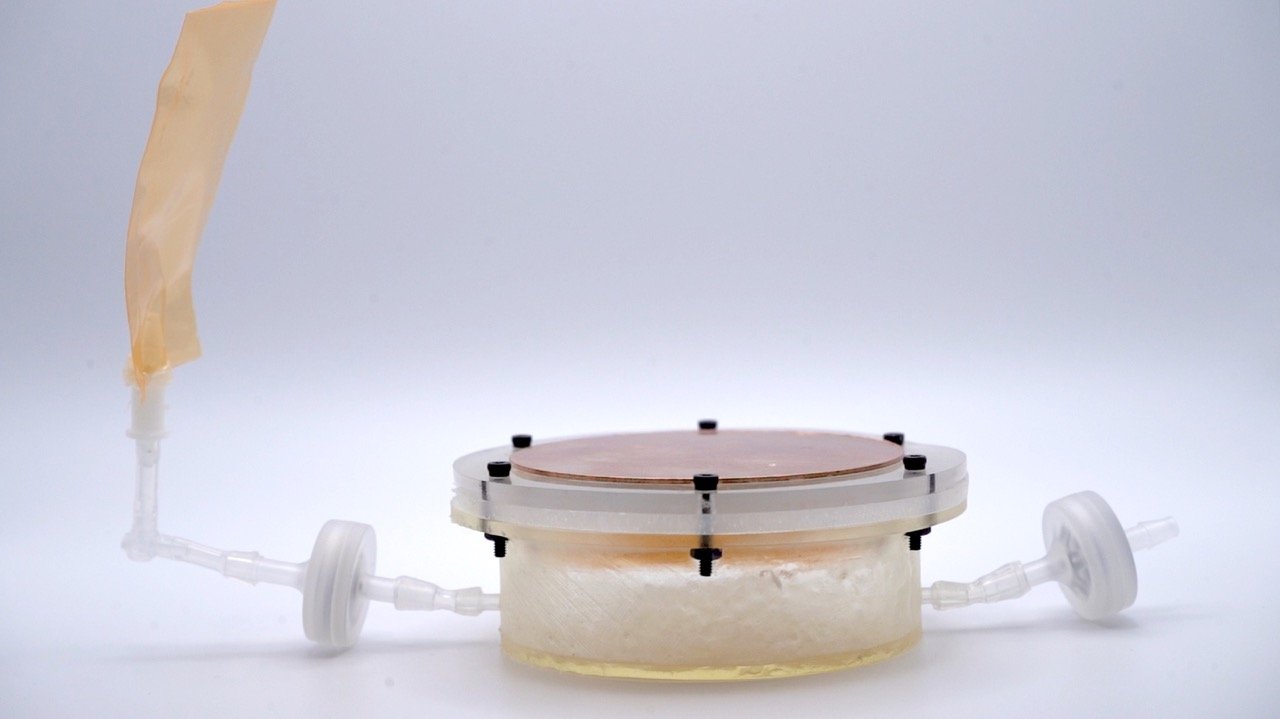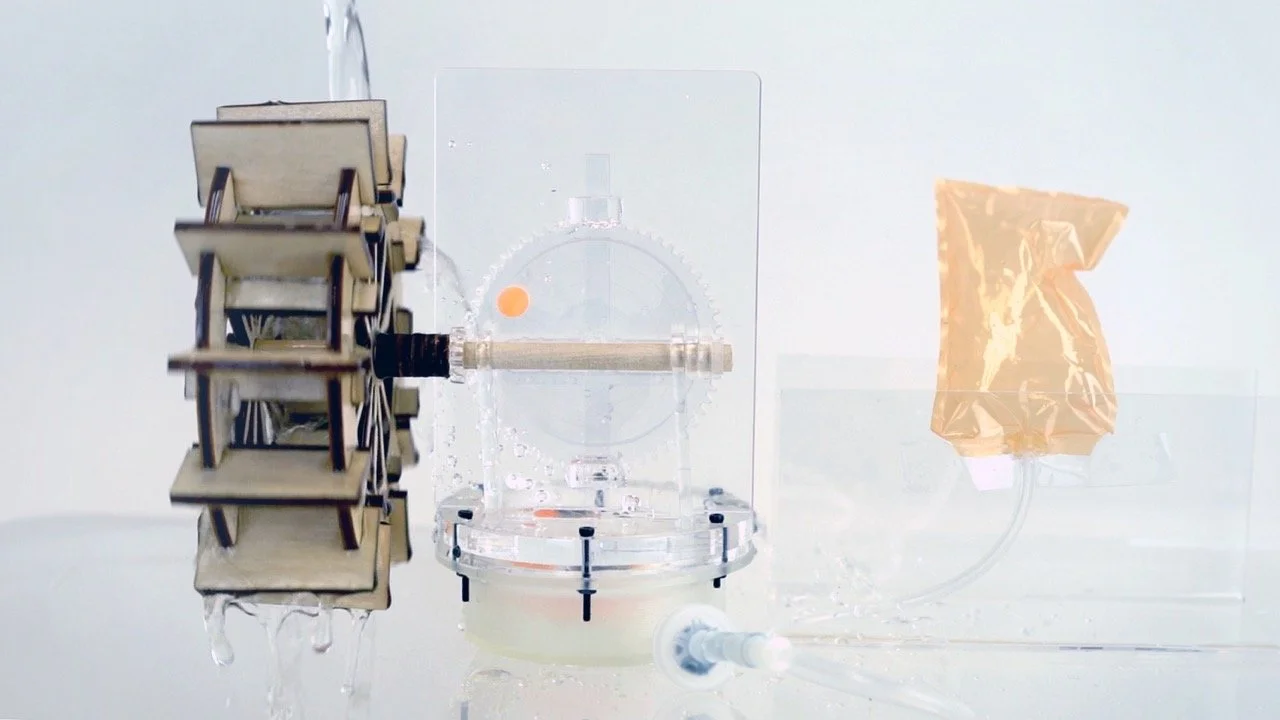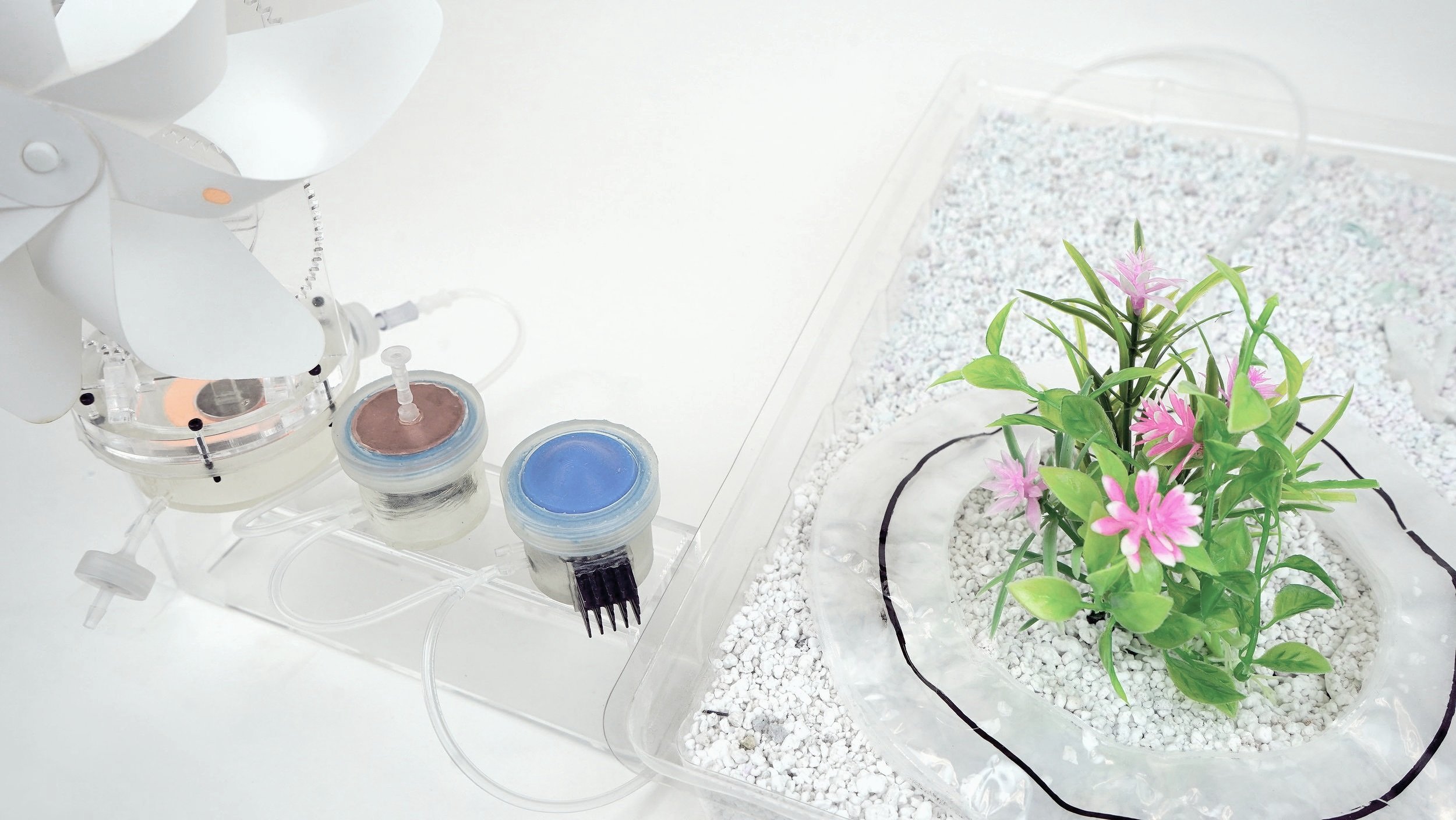
Sustainflatable: Harvesting energy from the sun, rain, and wind to sustain a garden through electronic-free and sustainable methods, including seeding at the right season, watering when needed, and providing protection to the plants at the appropriate times.
Sustainflatable: Harvesting, Storing and Utilizing Ambient Energy for Pneumatic Morphing Interfaces
2022-2023
While the majority of pneumatic interfaces are powered and controlled by traditional electric pumps and valves, alternative sustainable energy-harnessing technology has been attracting attention. This paper presents a novel solution to this challenge with the development of the Sustainflatable system, a self-sustaining pneumatic system that can harvest renewable energy sources such as wind, water flow, moisture, and sunlight, convert the energy into compressed air, and store it for later use in a programmable and intelligent way. The system is completely electronic-free, incorporating customized energy harvesting pumps, storage units with variable volume-pressure characteristics, and tailored valves that operate autonomously. Additionally, the paper provides a design tool to guide the development of the system and includes several environmental applications to showcase its capabilities.
Qiuyu Lu, Tianyu Yu, Semina Yi, Yuran Ding, Haipeng Mi, Lining Yao
In ACM User Interface Software and Technology Symposium (UIST). 2023. PDF | DOI
🏅 Best Paper Honorable Mention Award
A Novel Three-Phase Energy Harvesting Strategy for “Green“ Pneumatic Devices
The Three-phase Energy Harnessing Solution
In an electrically powered pneumatic system, a significant amount of energy is lost during energy conversion, especially in the step of powering the pump to generate compressed air for actuation. Specifically, 80%-90% of the energy is dissipated as heat.
We can opt for a more straightforward, non-electric approach by utilizing pneumatic energy exclusively. This entails a direct transition of energy from the primary source to pneumatic energy. Pneumatic energy can be readily stored and utilized without the need for conversion, resulting in enhanced energy efficiency, simpler and more cost-effective construction, and reduced reliance on hazardous materials like heavy metals.
Pumps for Energy Harvesting
We developed various non-electric pumps that can harvest a variety of ambient energy sources and leverage this energy to compress air.
Below, from the top to the bottom:
Moisture-driven pump: Air pressure can be accumulated by harvesting moisture fluctuations from the ambient environment.
Thermal-driven pump: Air pressure can be accumulated by harvesting thermal fluctuations from the ambient environment.
Wind-driven pump: Air pressure can be accumulated by harvesting kinetic energy from the wind.
Water-driven pump: Air pressure can be accumulated by harvesting kinetic energy from the water flow.
Storages for Energy Accumulation
Storage units made of different materials will exhibit different volume and pressure characteristics.
Valves for Energy Utilization
The valves in this system rely on tube kinking and/or bistable membrane phenomena for operation. Tube kinking occurs when a flexible tube is bent or compressed, obstructing the flow path. The bistable semi-spherical membrane can exist in two stable equilibrium states. Additionally, we have developed reconfigurable valves triggered by environmental factors, enhancing adaptability and autonomy.
Below, from the top to the bottom:
Air pressure valve: The air channel can be switched on/off by accumulated air pressure change.
Moisture valve: The air channel can be switched on/off by moisture gradient in the ambient environment.
Thermal valve: The air channel can be switched on/off by thermal conditions in the ambient environment.
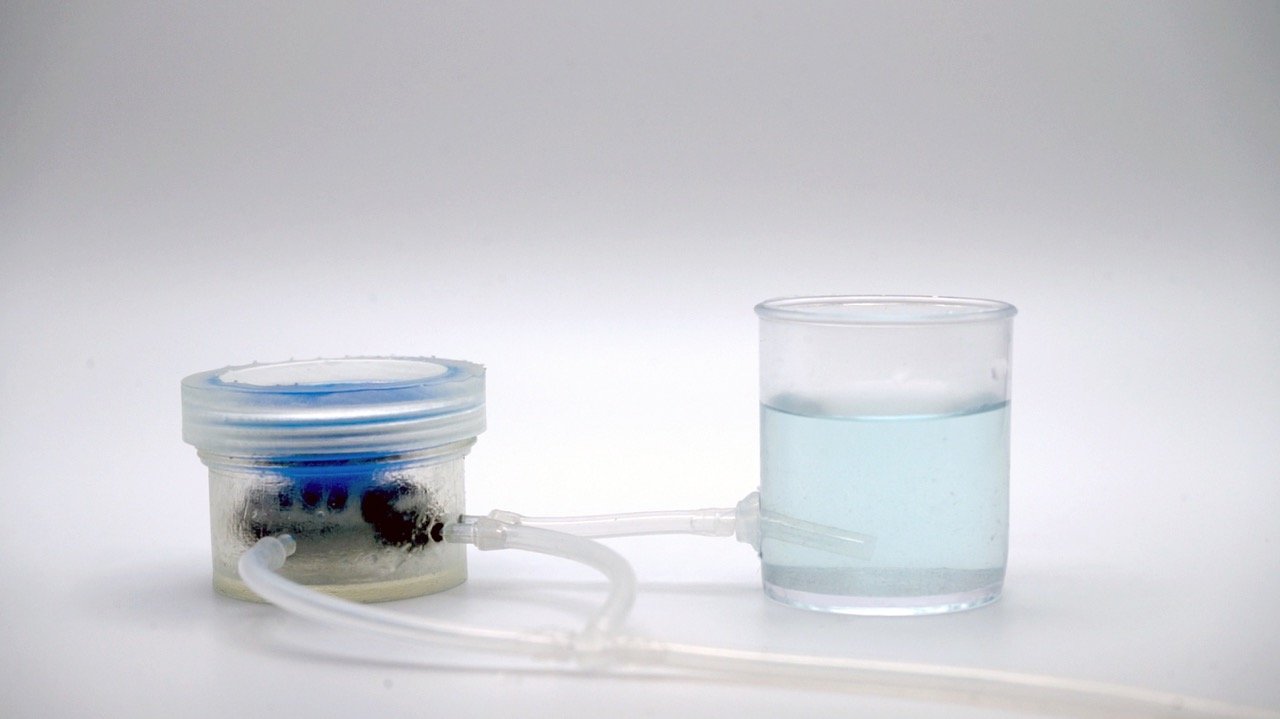
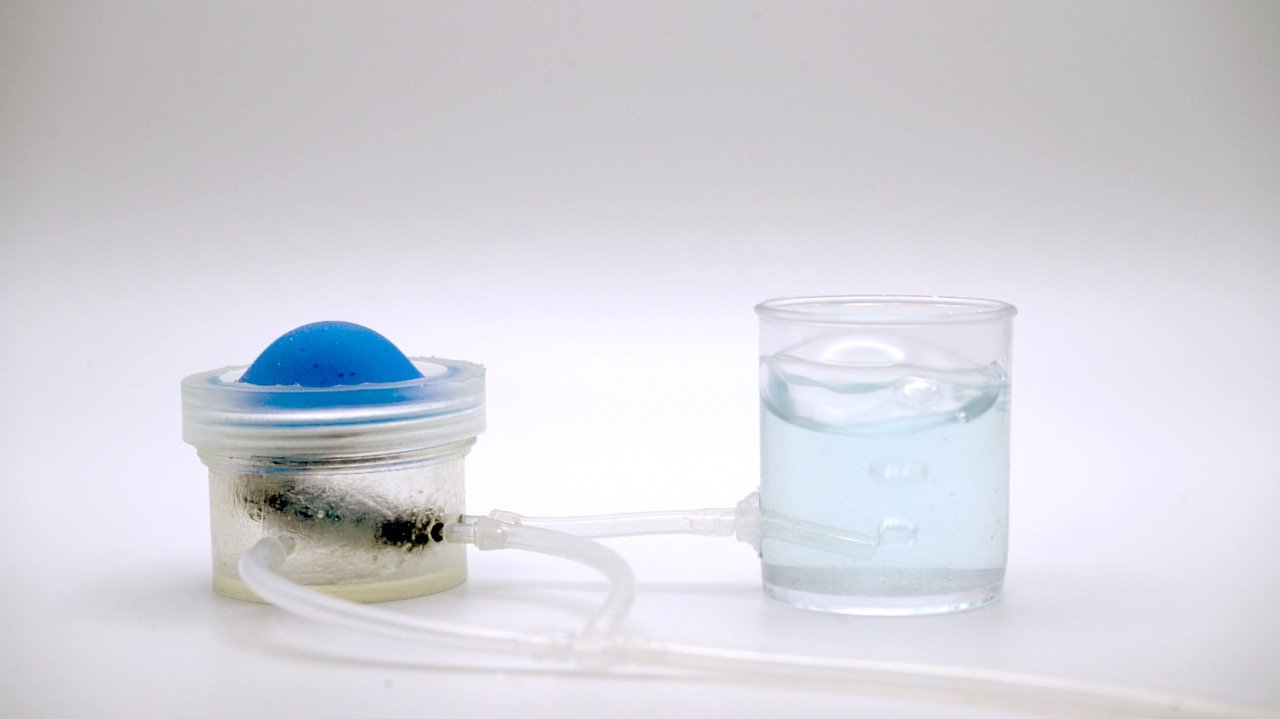
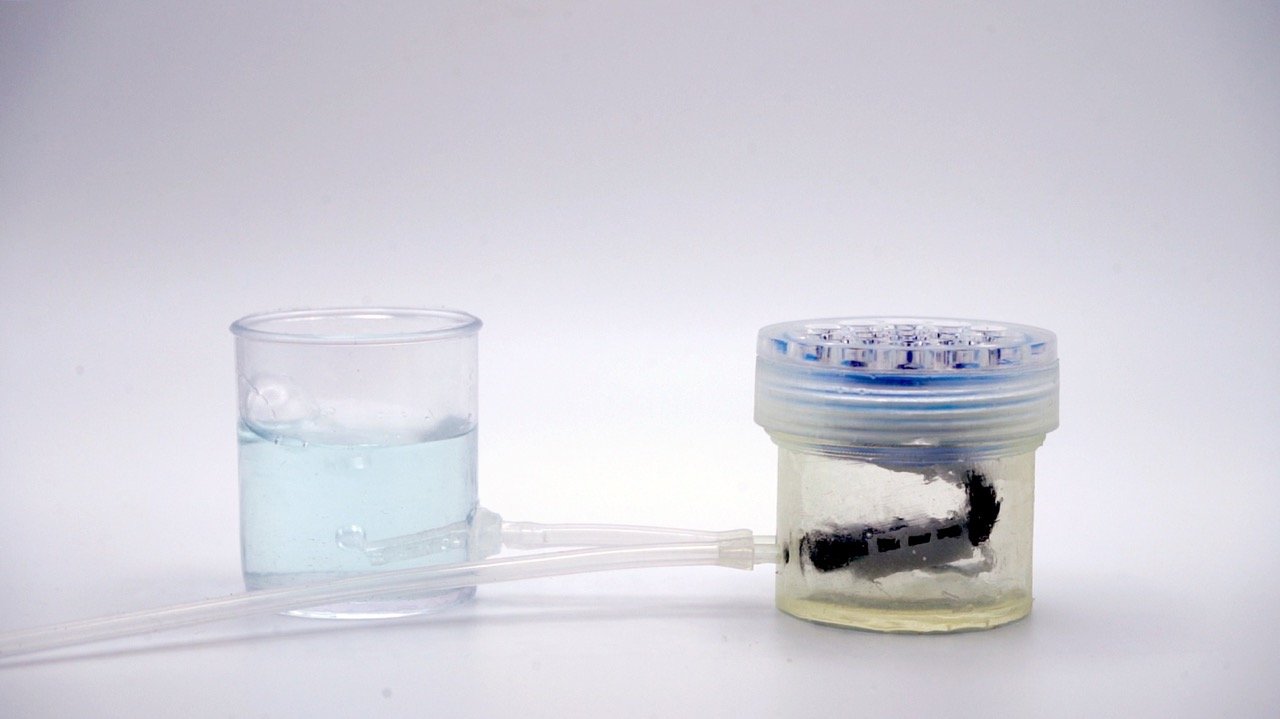
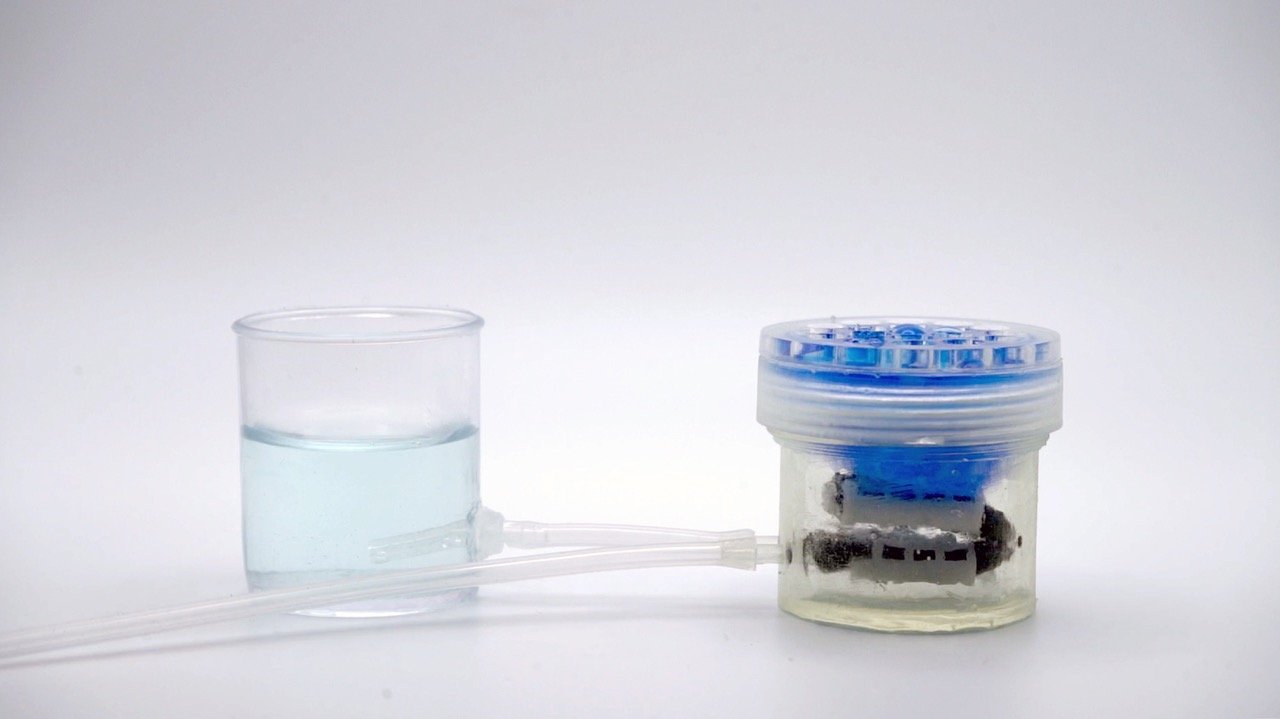
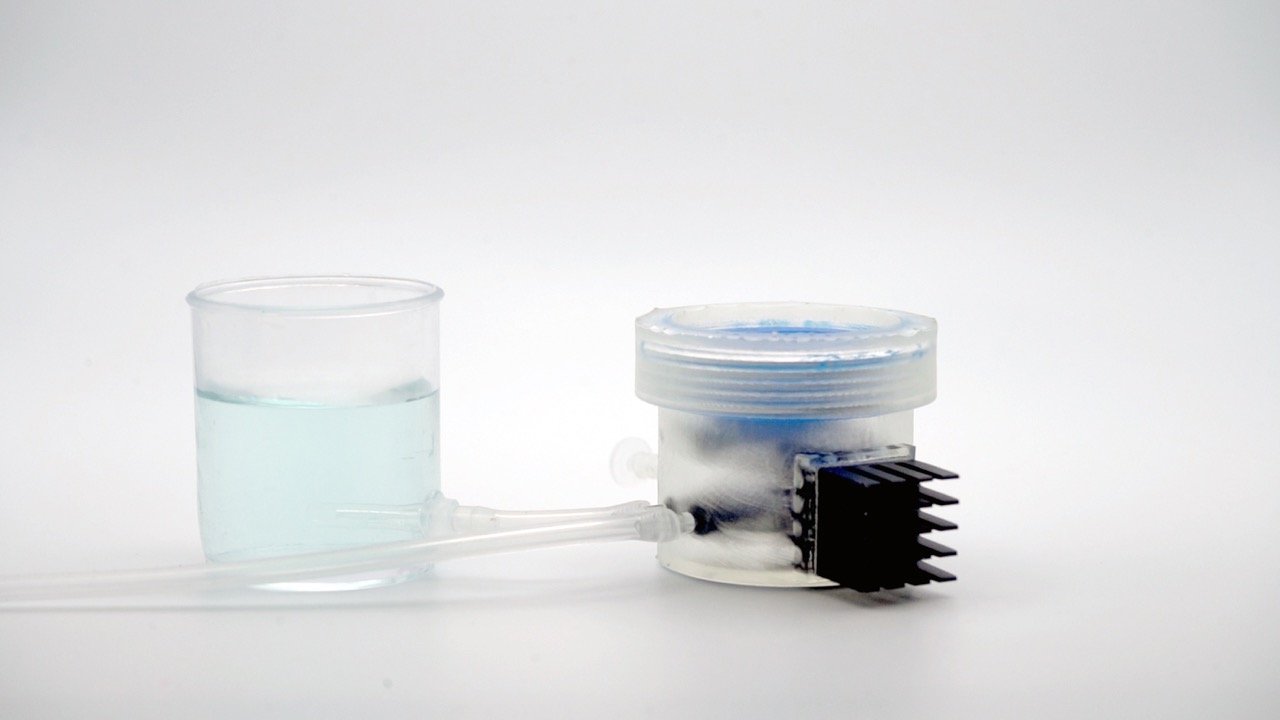
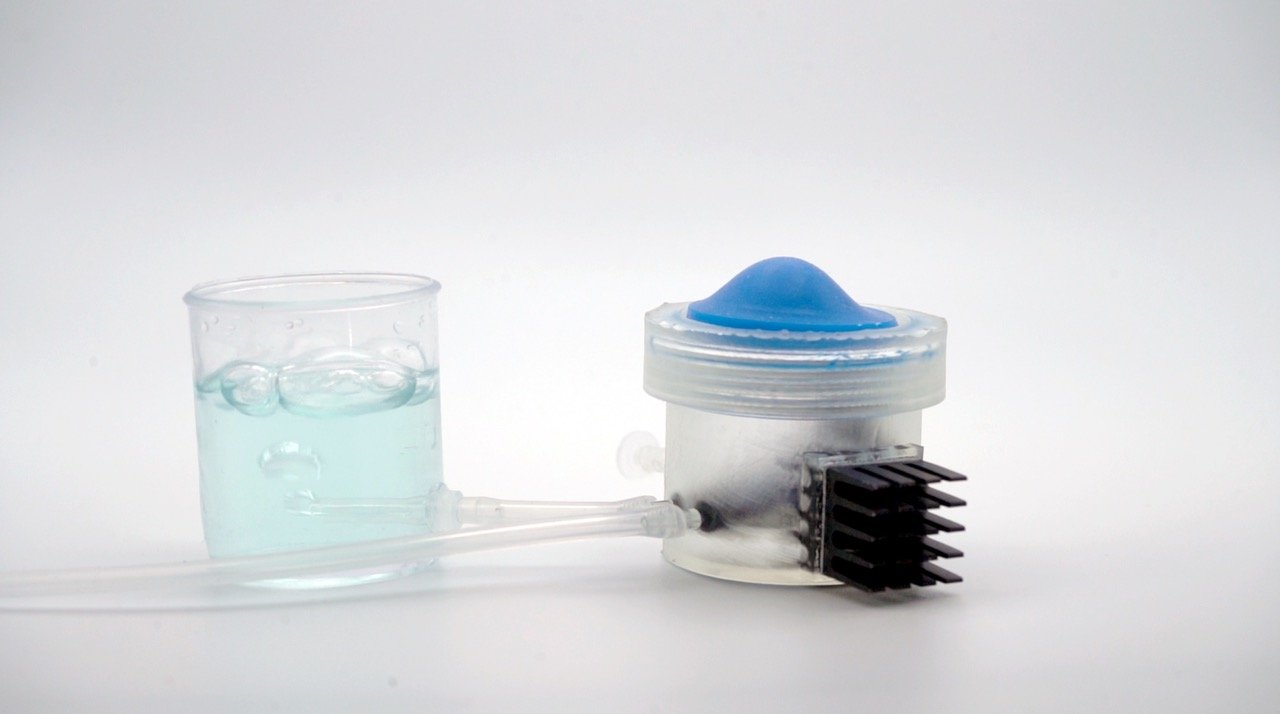
Sustainflatable: Harvesting energy from the sun, rain, and wind to sustain a garden through electronic-free and sustainable methods, including seeding at the right season, watering when needed, and providing protection to the plants at the appropriate times.
The Sustainflatable system is designed to be versatile and adaptable, making it suitable for deployment in various settings, whether indoors or outdoors. It is also autonomous, meaning that it does not require constant human intervention or monitoring.
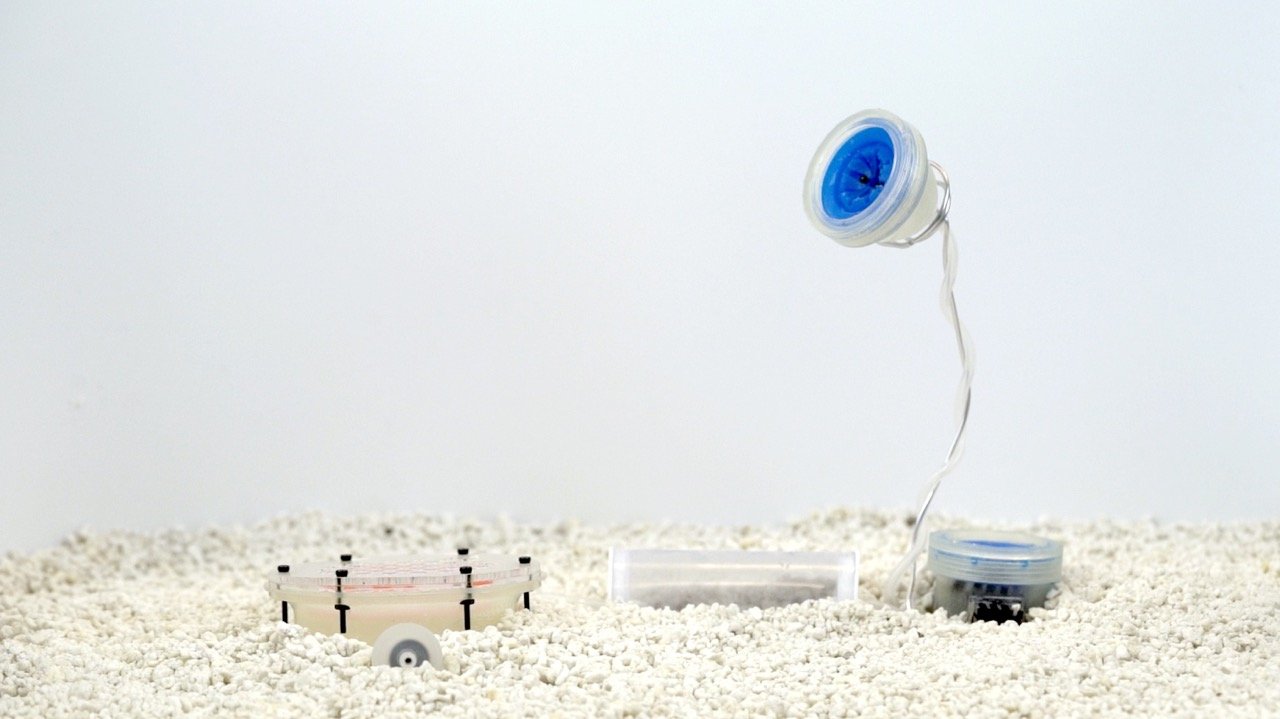
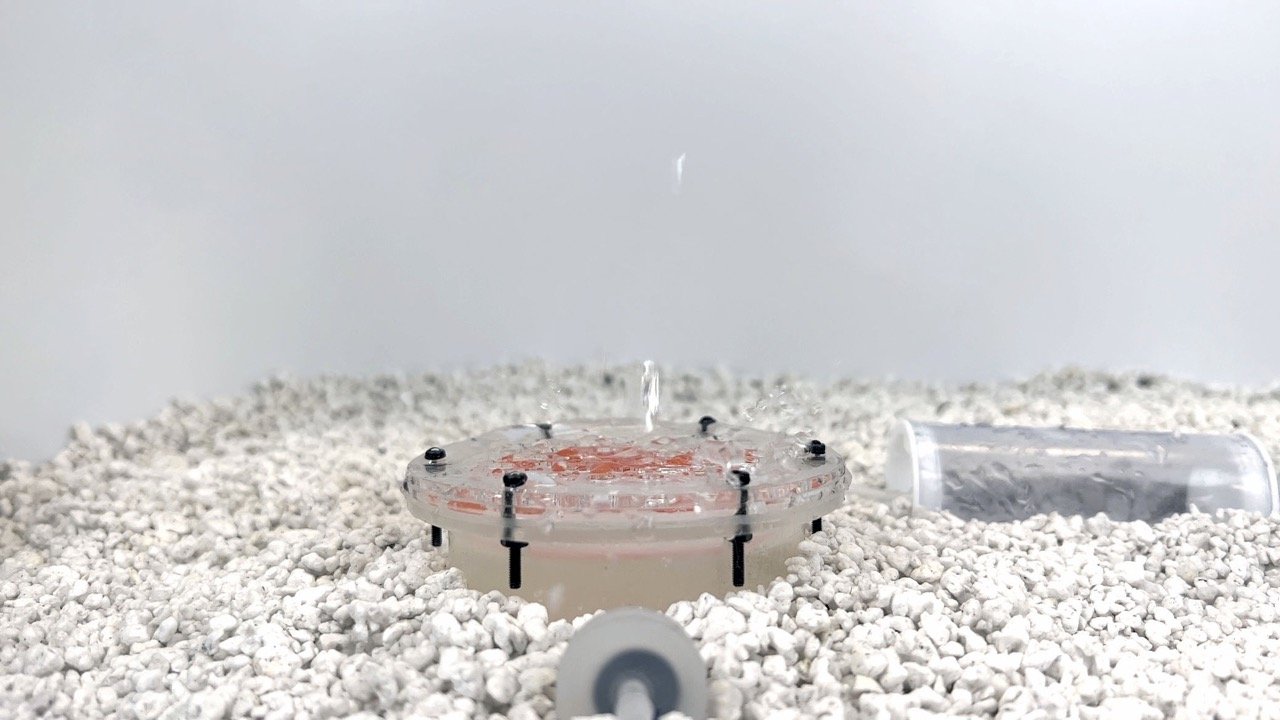
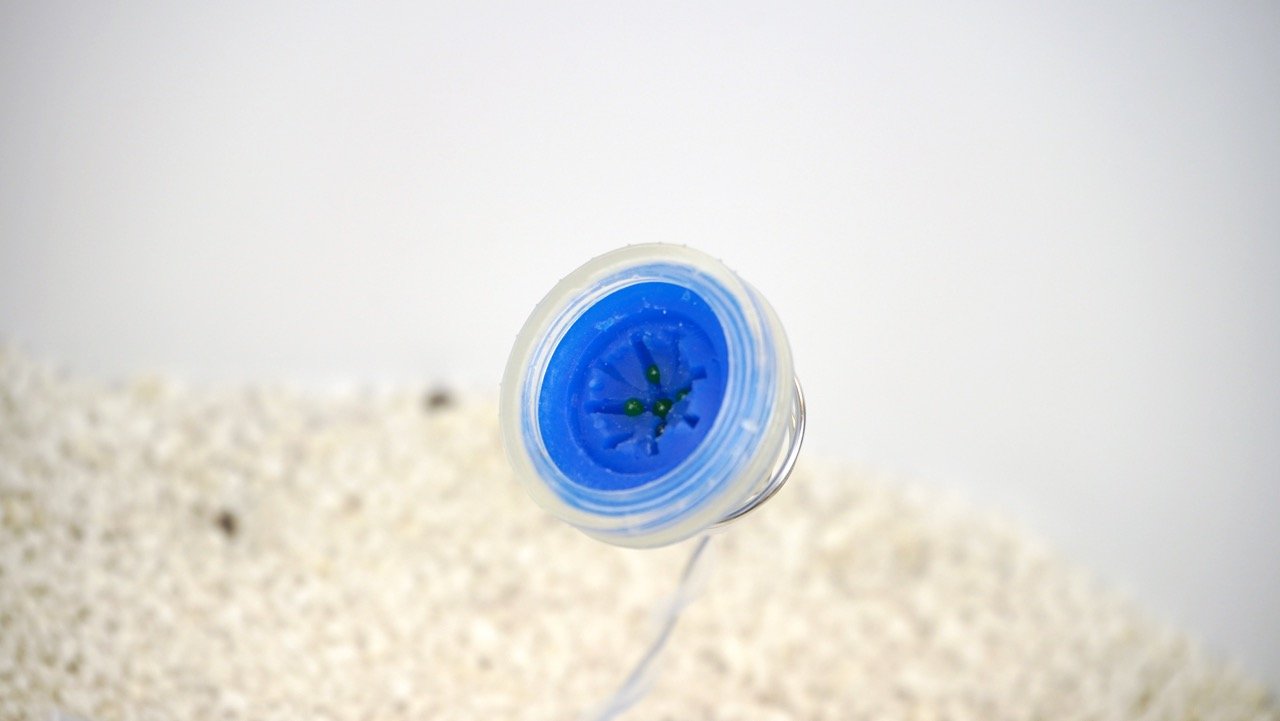
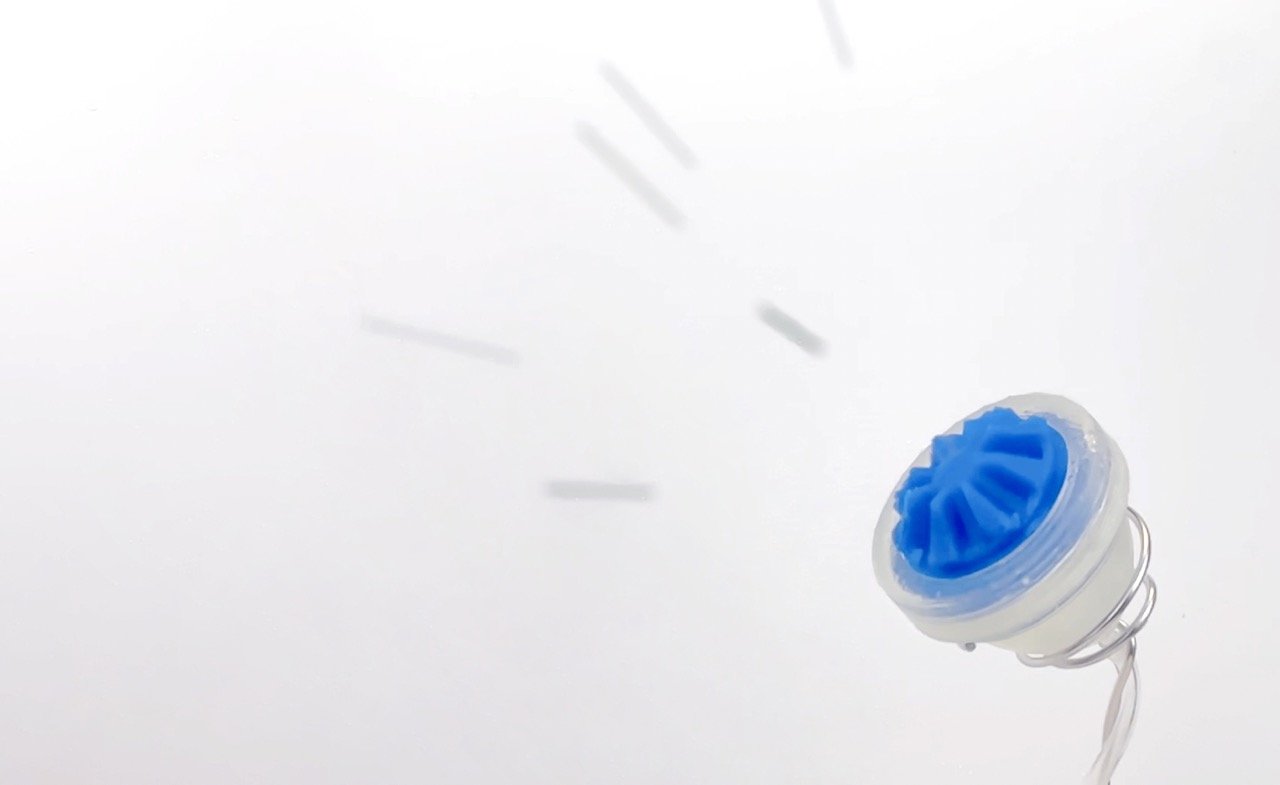
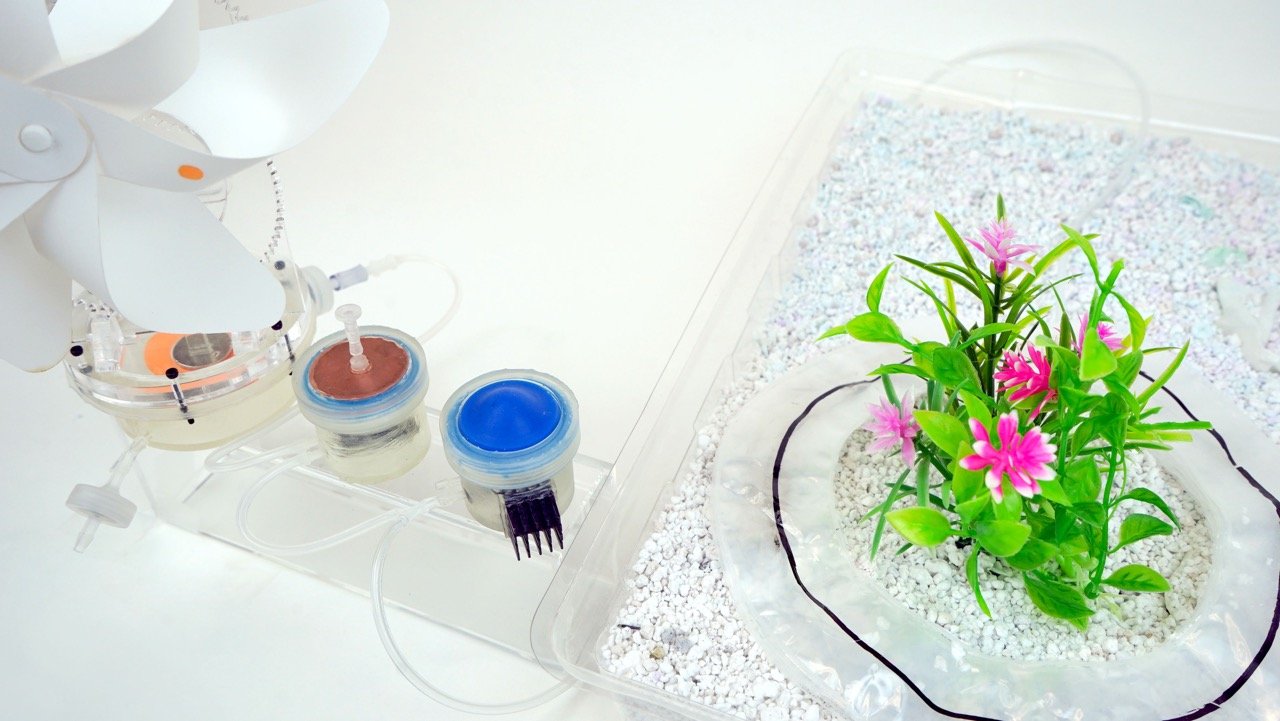
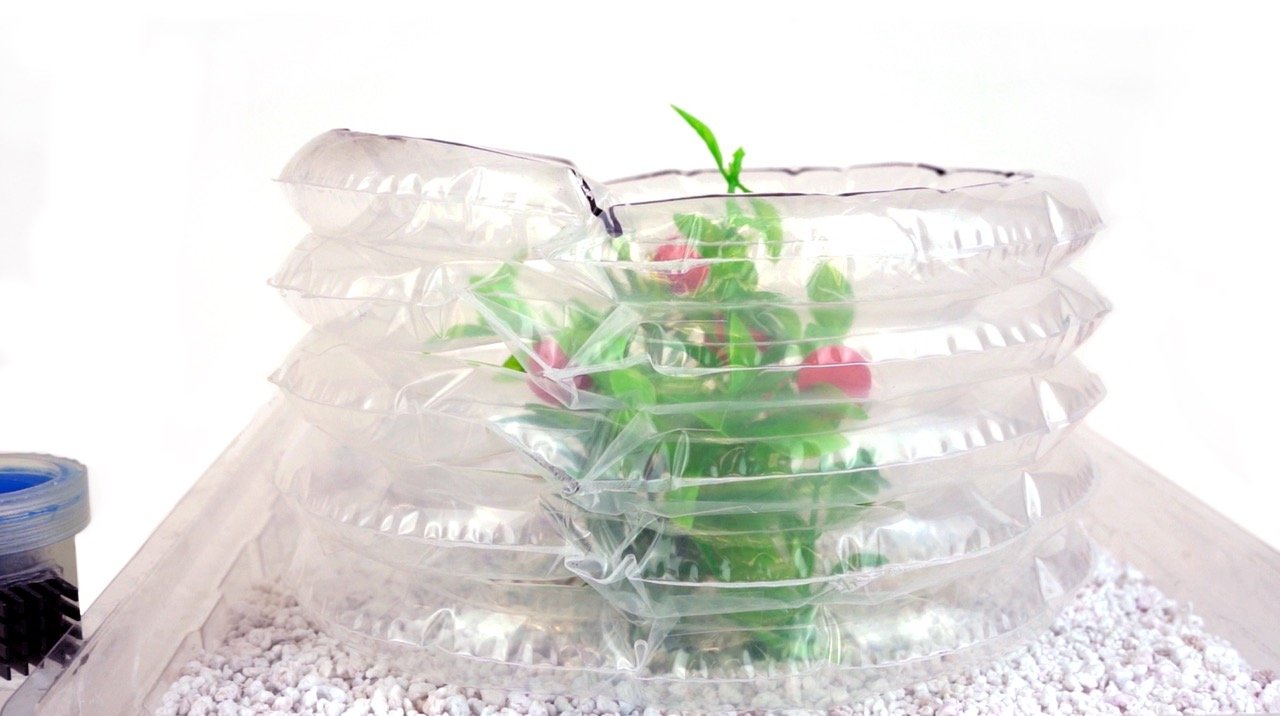
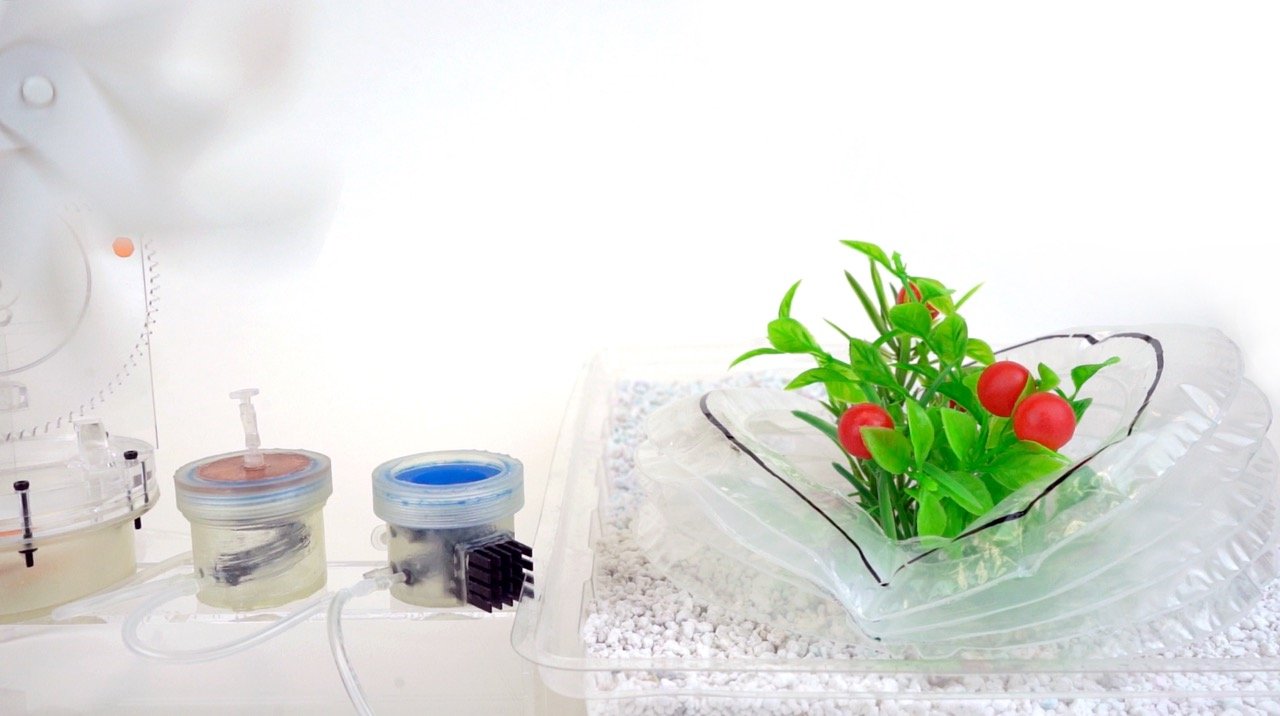
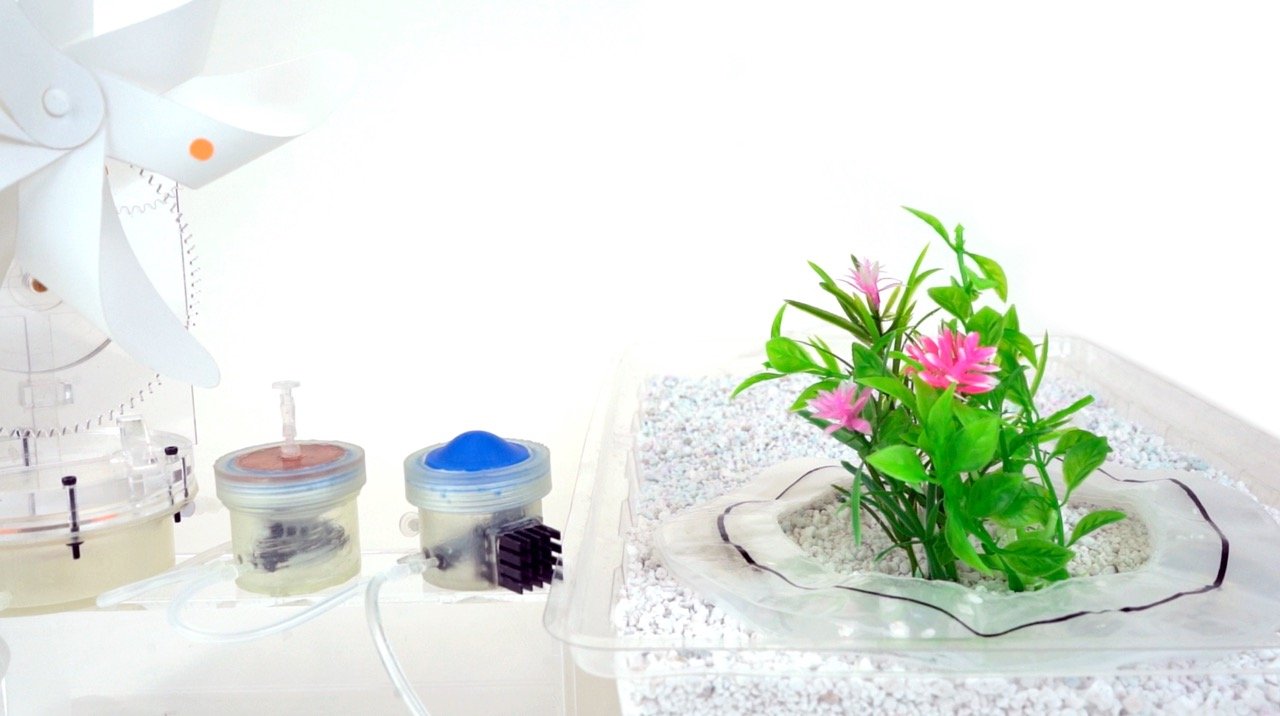
Design and Simulation Tool
We developed a design tool to guide users through the design and fabrication process of the Sustainflatable system. The design tool enables the users to explore different configurations and structures of the system with a simple GUI. It also provides a preview of the system’s working procedure reacting to the environment changes, which will help users better understand and iterate the function of the designed system. Lastly, the tool can export the corresponding model and material list to facilitate prototyping of the system.
Open Source
The project is open source. All related model and fabrication files, the design and simulation tool can be downloaded from the links on the left.
Acknowledgment
We want to thank Lucas Ding for helping conduct certain experiments. We thank the National Science Foundation Grants (Career IIS-2047912 and CNS-2327014) for supporting this work.





